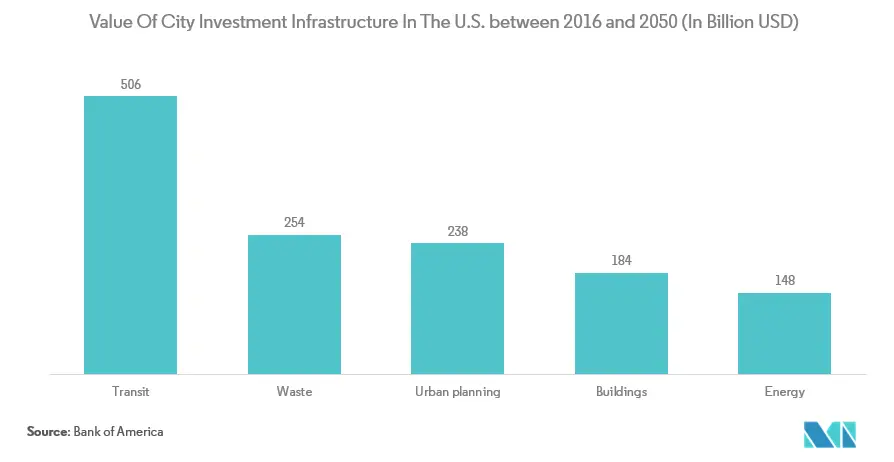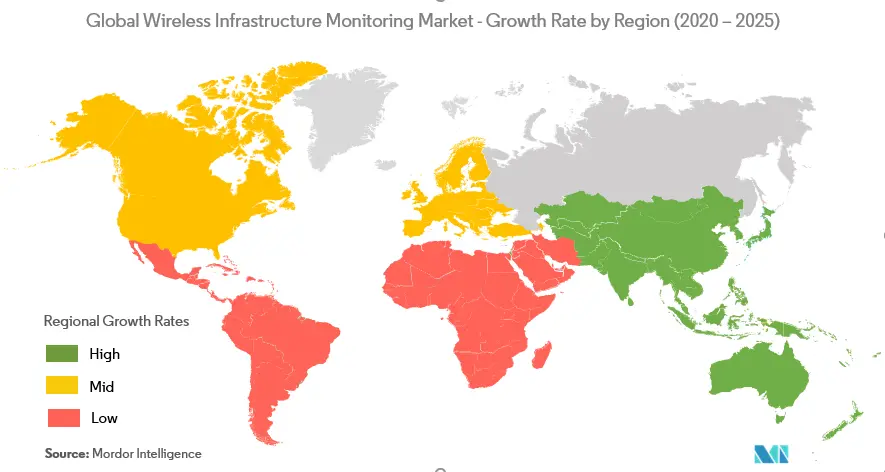Market Trends of Wireless Infrastructure Monitoring Industry
This section covers the major market trends shaping the Wireless Infrastructure Monitoring Market according to our research experts:
Structural Monitoring Segment is Expected To Grow Significantly
- Structural monitoring equipment is employed to provides continuous, real-time monitoring of the health of the infrastructure and detects any cracks that can develop unnoticed and worsen over time. As per the IOGP’s Global Production Report 2019, demand for oil and gas is at the peak, greater than ever before, with dramatic growth in Africa, Asia Pacific, the Middle East, and the Americas. This has fueled the investment in exploration and production of oil to meet the demand and supply. Many mid-sized players are forming a strategic alliance for the development of unconventional resources.
- For instance, In 2019, Ecopetrol and Occidental Petroleum Corp agreed to form a joint venture for the development of unconventional reservoirs in approximately 97,000 acres of the Permian Basin in the State of Texas which is one of the largest and most active oil basins in the United States, accounting for approximately 30 percent of the total U.S. oil production. It is expected to boost the demand for structural monitoring equipment in the oil and gas sector.
- Moreover, the growth of infrastructure monitoring system market is boosting due to the ongoing mega-trend of smart cities. An increasing number of people are moving to cities, spurring skyrocketing demand for resources and services in these urban centers. By 2025, 35 cities across the world will have a population of greater than 10 million people. Cities already consume 2/3 of the world’s energy and the majority of other resources such as water, housing facilities, reliability of energy and power, the quality of the air, and the flow of traffic, which will impact the quality of living. So, most of the urban cities are addressing the escalating demands and are looking over the Internet of Things (IoT) technology for the cutting-edge intelligence and flexibility necessary to help cities use resources more efficiently.
- For instance, Intel and The City of San Jose, CA collaborated on a public-private partnership project which implements Intel’s IoT Smart City Demonstration Platform to create environmental sustainability by using IoT technology to measure characteristics such as particulates in the air, noise pollution, and traffic flow and offer air quality, noise, transportation efficiency, health, and energy efficiency.

North America Will Experience Significant Growth and Drive the Market
- The rapid expansion of the end-user industries that offer a major opportunity for the application of wireless infrastructure monitoring systems is leading to the expansion of the market. For instance, United States has 98 operating nuclear power reactors in 30 states, and since 2001 these plants have achieved an average capacity factor of over 90%, generating up to 807 TWh per year and accounting for about 20% of the total electricity generated. The average capacity factor had risen from 50% in the early 1970s to 70% in 1991, and it passed 90% in 2002. The industry invests about USD 7.5 billion per year in maintenance and upgrades of the plants, which is expected to increase in upcoming years and is expected to drive the market.
- The players operating in the region are focusing on new product developments to increase their production capabilities. For instance, in October 2019, GSSI, United States-based ground penetrating radar (GPR) equipment manufacturer has introduced the new 200 MHz (200 HS) antenna, the first of the next-generation high-performance GS Series that is designed for applications that require deeper depth penetration. It is ideal for geophysical, geotechnical, or environmental applications that require high reliability under challenging survey conditions.
- However, the market is expected to be affected by the recent outbreak of the COVID-19 pandemic. The slowing down of the economy is expected to reduce expenditure on infrastructure and thereby to reduce growth figures for the market in a post-corona economy. However, the companies are expected to invest in their IT systems to develop remote monitoring capabilities in order to avoid a similar situation in the future. This is expected to act as a big stimulus for the market in the medium to long run.


